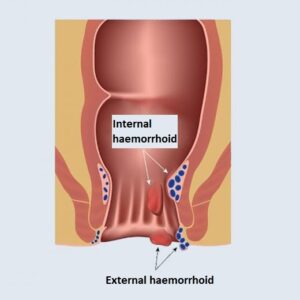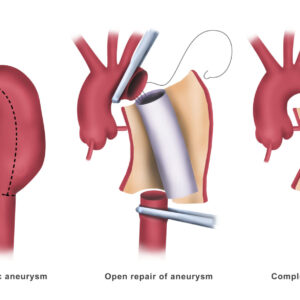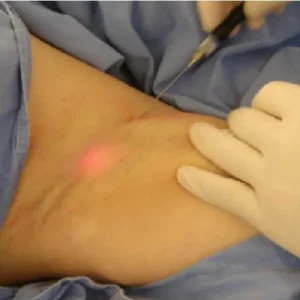Description
Familiarity with treatment
Postoperative care for penile inversion vaginoplasty includes a crucial aspect called post-surgery dilation. Dilation is an integral part of the initial recovery and long-term maintenance of a transgender person’s neo-vagina. Here’s an explanation of the procedure based on the information from the search results:
Importance of dilation: Dilation is essential to prevent the skin graft inside the vagina from contracting, which can lead to shortening or closure of the neo-vagina. Without proper dilation, the depth of the new vagina cannot be regained by simply resuming or increasing dilation later on 1.
When to start dilation: Dilation typically begins a few days after surgery. Your surgeon will provide specific instructions on when to start and how frequently to perform dilation.
Purpose of dilation: The primary goal of dilation is to maintain the depth and calibre of the vagina. Regular dilation helps prevent wound contraction and ensures optimal elasticity of the vaginal walls to accommodate penetration 2.
Dilation schedule and technique: Your surgeon will provide a dilation schedule tailored to your specific needs. This schedule will outline the frequency and duration of dilation sessions. The procedure involves inserting a dilator into the vagina and gently applying pressure to stretch the tissues. Gradually, larger dilators are used over time to maintain or increase the vaginal depth 3.
Consistency and adherence: Consistency is crucial in dilation. It is important to strictly follow your surgeon’s dilation protocol to prevent loss of depth and maintain the health of your new vagina 2. Adhering to the recommended schedule and technique is essential for optimal outcomes.
Long-term commitment: Dilation is typically required for life to ensure the long-term functionality and health of the neo-vagina. It is important to understand that dilation becomes a permanent part of your self-care routine after penile inversion vaginoplasty 4.
Who is it suitable for?
Vaginoplasty with post-surgery dilation is suitable for transgender women who have undergone penile inversion vaginoplasty. Here’s a summary of the information from the search results:
Importance of dilation: Dilation is crucial to maintain the size, shape, and depth of the neo-vagina after penile inversion vaginoplasty. It helps prevent the neo-vagina from contracting or closing, ensuring optimal functionality and sexual intercourse.
Dilation schedule: Dilation typically begins a few days after surgery and is almost always required for life. Your surgeon will provide specific instructions on when to start dilation, the frequency of dilation sessions, and the duration of each session.
Procedure: Dilation involves inserting a medical-grade dilator into the vagina and gently applying pressure to stretch the tissues. Initially, smaller dilators are used, gradually progressing to larger ones over time to maintain or increase the vaginal depth.
Pain and discomfort: Dilation should not be a painful process. However, some discomfort or pressure may be experienced initially as you learn the angles and techniques that work best for your body. If you experience severe pain during dilation, it’s important to stop, adjust the dilator, and reposition your body for comfort.
Lifelong commitment: Dilation becomes a permanent part of your self-care routine after penile inversion vaginoplasty. Consistency and adherence to your surgeon’s dilation protocol are essential to prevent the loss of depth in your new vagina.
Who is it not suitable for?
While post-surgery dilation is generally recommended for transgender women who have undergone penile inversion vaginoplasty, there may be certain cases where it is not suitable or may require modifications. Here are a few situations where post-surgery dilation may be challenging or not recommended:
Individuals with certain medical conditions: Some medical conditions or complications may make dilation challenging or contraindicated. This could include conditions that affect wound healing, such as certain connective tissue disorders or immune system disorders. It is important to discuss your medical history with your surgeon to determine if dilation is appropriate for you.
Severe complications or wound healing issues: In cases where there are severe complications or issues with wound healing after surgery, your surgeon may need to modify the dilation routine or provide alternative recommendations to ensure proper healing. This could involve delaying dilation or using alternative methods to maintain vaginal depth.
Individuals with limited mobility or dexterity: Post-surgery dilation requires a certain level of mobility and manual dexterity to perform effectively. If an individual has limitations in these areas, they may require assistance or modifications to the dilation routine. Working with a healthcare professional may be necessary to develop a personalized approach.
Individuals who opt for alternative surgical techniques: While penile inversion vaginoplasty is the most common technique used for vaginoplasty, there are alternative surgical techniques available. Some of these techniques may not require post-surgery dilation or may have different postoperative care requirements. It is important to discuss the options with your surgeon to determine the most suitable approach for you.
Advantages
The advantages of post-surgery dilation following vaginoplasty are as follows:
Maintenance of vaginal depth: Dilation helps maintain the depth of the neo-vagina created during vaginoplasty. Regular dilation prevents the neo-vagina from contracting or closing, ensuring that the depth is preserved over time 1.
Prevention of vaginal stenosis: Vaginal stenosis is a potential complication after vaginoplasty, where the vaginal walls scar down and contract. Dilation helps prevent this by keeping the vagina open and preventing the formation of scar tissue 2.
Optimal functionality and sexual intercourse: Proper dilation ensures that the neo-vagina remains functional for sexual intercourse. It helps maintain the elasticity and flexibility of the vaginal walls, allowing for comfortable penetration and sexual satisfaction 1.
Prevention of irreversible depth loss: Without regular dilation, the skin graft inside the vagina can contract, leading to shortening or closure of the neo-vagina. It is important to follow the surgeon’s dilation protocol to prevent irreversible loss of vaginal depth 1.
Long-term care and maintenance: Dilation becomes a lifelong commitment after vaginoplasty. By adhering to the dilation routine, individuals can ensure the long-term health and functionality of their neo-vagina.
Complications
Complications of vaginoplasty and post-surgery dilation can vary depending on the specific surgical technique used and individual factors. Here are some potential complications that may arise:
Narrowing of the vaginal canal: One common complication is the narrowing of the vaginal canal, also known as vaginal stenosis. This can occur if proper dilation is not performed regularly or if scar tissue forms. Vaginal stenosis may require additional surgical intervention to address.
Fistula formation: In some cases, a fistula may develop, which is an abnormal connection between the new vagina and the rectum or bladder. Fistulas can cause urinary or fecal incontinence and may require surgical correction.
Infection: Infections, such as vaginal yeast infections, can occur after vaginoplasty, particularly due to increased vaginal moisture from dilation or antibiotic use. Prompt medical attention should be sought if symptoms of infection, such as abnormal discharge or discomfort, arise.
Malodor and frequent secretions: When an intestinal tissue approach is used for vaginoplasty, there is a risk of malodor and frequent secretions due to the digestive nature of the tissue. The use of panty liners or pads may be necessary for long-term management.
Complications specific to alternative techniques: If alternative techniques, such as the use of colon or small bowel lining, are employed, there may be additional risks associated with abdominal surgery and potential complications related to diseases of the bowel, such as inflammatory bowel disease or neoplasms.
preoperative care
Preoperative care for vaginoplasty and post-surgery dilation involves several important steps to ensure a successful surgery and recovery. Here are some key aspects of preoperative care:
Consultation and evaluation: The preoperative process begins with a consultation with a qualified surgeon who specializes in transgender surgeries. During this consultation, the surgeon will evaluate your overall health, discuss your goals and expectations, and explain the surgical procedure and potential risks.
Medical evaluation and preparation: Before surgery, you will undergo a comprehensive medical evaluation to assess your overall health and identify any potential risk factors or contraindications. This evaluation may include blood tests, imaging studies, and consultations with other specialists if necessary.
Hormone therapy management: If you are undergoing hormone therapy as part of your gender transition, your hormone levels may need to be optimized before surgery. Your surgeon and endocrinologist will work together to ensure that your hormone levels are within the appropriate range for surgery.
Psychological evaluation and support: Many surgeons require a psychological evaluation to assess your mental health and readiness for surgery. This evaluation helps ensure that you have realistic expectations and are emotionally prepared for the procedure. Additionally, ongoing psychological support may be provided throughout the preoperative and postoperative period.
Education and informed consent: It is essential to have a thorough understanding of the surgical procedure, potential risks, and expected outcomes. Your surgeon will provide detailed information and obtain your informed consent before proceeding with the surgery. Take the time to ask questions and address any concerns you may have.
Preoperative instructions: Your surgeon will provide specific preoperative instructions to follow in the days leading up to the surgery. This may include guidelines on fasting, medication management, and hygiene practices. It is crucial to adhere to these instructions to ensure a safe and successful surgery.
Postoperative care
Postoperative care for vaginoplasty and post-surgery dilation involves several important steps to promote healing and ensure optimal outcomes. Here are some key aspects of postoperative care:
Hospital stay and initial recovery: After vaginoplasty, you will typically stay in the hospital for about five to six days. During this time, you will be closely monitored by your care team. Initially, you will spend most of your time in bed, gradually progressing to sitting and walking as you approach discharge.
Pain management and wound care: Your care team will monitor your pain levels and provide appropriate pain management. They will also ensure that your surgical incisions are healing properly and may provide instructions on wound care, such as keeping the incision areas clean and dry.
Vaginal packing and dilation: Intraoperatively, gauze packing or a stenting device may be placed in the vagina, which is typically removed after 5-7 days Your surgeon will provide instructions on vaginal dilation, which involves using dilators to maintain the depth and width of the neo-vagina. Dilation schedules may vary between surgeons 1.
Activity restrictions and gradual return to normalcy: Your surgeon will provide guidelines on activity restrictions, such as avoiding strenuous activities for several weeks and refraining from swimming or bike riding for a few months Initially, sitting may be uncomfortable, but not unsafe, and using a donut ring can help relieve pressure at the surgical site 1. It’s important to follow your surgeon’s instructions regarding activity limitations and gradually resume normal activities as advised.
Hygiene practices: Your surgeon will provide instructions on postoperative hygiene practices. This may include resuming showering after the first postoperative visit, patting incisional areas dry, and avoiding baths or submerging in water for a specified period 1.
Follow-up appointments: Regular follow-up appointments with your surgeon are crucial for monitoring your progress, checking for complications, and making any necessary adjustments to your care plan. These appointments may occur approximately one to two times a week during the first month 2.
Long-term care and maintenance: Vaginal dilation is typically required for the rest of your life to maintain the functionality and depth of the neo-vagina 3. Your surgeon will provide specific instructions on dilation techniques, including the size and frequency of dilators to use 4. Additionally, pelvic floor physical therapy may be recommended to address issues like painful dilations or urinary leakage.







Reviews
There are no reviews yet.